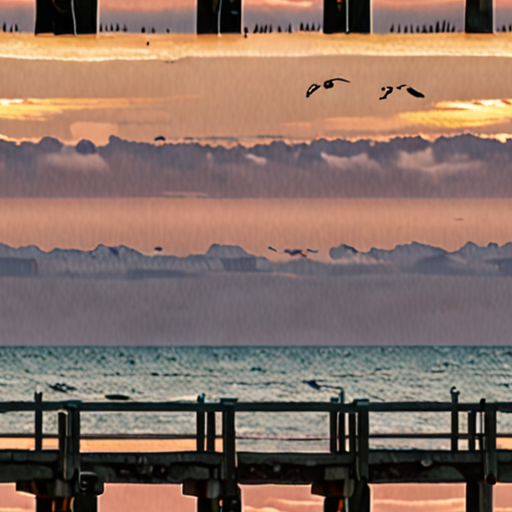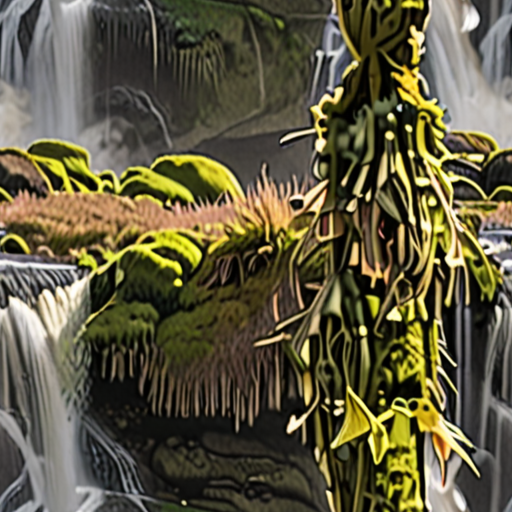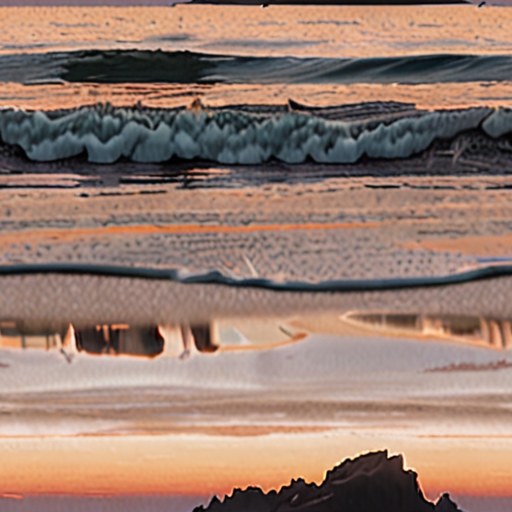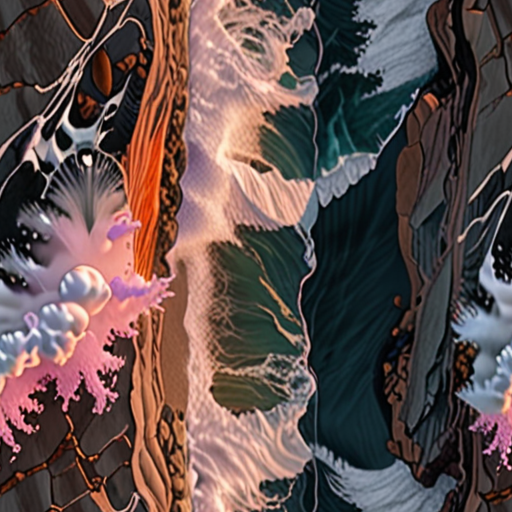When it comes to capturing the beauty and power of water, stunning water photography ideas can elevate your images from mere snapshots to breathtaking works of art. Whether you’re aiming to freeze the movement of a waterfall, capture the serenity of a still pond, or convey the energy of a crashing wave, mastering water photography requires a combination of technical skills, creativity, and patience.

How to Take a Good Photo of Water
When capturing the essence of water through photography, it’s essential to consider several factors to achieve a stunning image.
- Manual Focus: Using manual focus allows you to precisely control the area of focus, which is crucial when photographing water. By setting the focus on a specific point, you can create a sense of depth and dimensionality in your image.
- Shutter Speed: A slower shutter speed can help create a blurred effect on the water, giving it a sense of movement and dynamism. Experiment with different shutter speeds to achieve the desired effect.
- ISO and Exposure Time: Adjusting the ISO and exposure time can help balance the brightness and darkness of the image. If the scene is too dark, increasing the ISO or exposure time can help capture more light. Conversely, if the scene is too bright, reducing the ISO or exposure time can prevent overexposure.
- Composition: Consider the composition of your shot, taking into account the rule of thirds, leading lines, and framing techniques. These principles can help guide the viewer’s eye and create a visually appealing image.
- Camera Settings: Familiarize yourself with your camera settings, including aperture, shutter speed, and ISO. Understanding how these settings interact can help you achieve the desired effect and capture high-quality images.
- Practice and Patience: Photography is an art that requires practice and patience. Don’t be discouraged if your initial attempts don’t yield the desired results – keep experimenting and refining your skills until you achieve the look you’re aiming for.
By mastering these techniques and considering the unique characteristics of water, you’ll be well on your way to capturing breathtaking photos that showcase the beauty and power of this element.
Tips for Capturing Stunning Water Photos
- Shoot during the Golden Hour: The soft, warm light of the golden hour can add a magical touch to your water photos, making them appear more serene and inviting.
- Experiment with Reflections: Look for opportunities to capture reflections in the water, such as ripples, waves, or calm surfaces. These can add an extra layer of interest and depth to your image.
- Pay Attention to Lighting: Lighting plays a significant role in determining the mood and atmosphere of your image. Pay attention to the direction and intensity of the light, and adjust your camera settings accordingly.
- Get Low and Get Close: Don’t be afraid to get low and close to the water’s surface. This can help you capture unique perspectives and details that might otherwise go unnoticed.
Additional Resources:
For more tips and inspiration on capturing stunning water photos, check out our Sailing Photo Awards website, where you can find a wealth of information on photography techniques, gear reviews, and inspiring stories from talented photographers around the world.
Creating Stunning Photos with Water
As a photographer who loves capturing the beauty of the ocean, I’ve learned a thing or two about how to make cool photos with water. Whether you’re shooting on a sailboat or standing on the shore, there are several techniques you can use to capture stunning images of water.
Long Exposures for Blurred Water Effect
One of my favorite ways to photograph water is by using long exposures. This technique creates a beautiful blurred effect that adds movement and dynamism to your image. To get started, try setting your camera to a slower shutter speed – around 1/15th of a second or slower. Experiment with different speeds to find what works best for your shot.
Tips for Capturing Long Exposure Images:
- Use a tripod to keep your camera stable.
- Set your camera to manual mode and adjust the aperture and ISO accordingly.
- Shoot during golden hour or overcast skies for optimal lighting conditions.
- Experiment with different shutter speeds to achieve the desired effect.
Moving Water for Added Depth
Another great way to add interest to your water photos is by incorporating moving water. This could be waves crashing against the shore, ripples on a lake, or even the spray from a waterfall. To capture these types of shots, try using a faster shutter speed – around 1/500th of a second or faster. This will freeze the motion and create a sense of energy in your image.
Tips for Capturing Moving Water:
- Use a fast shutter speed to freeze the motion.
- Position yourself close to the water’s edge to capture the spray and foam.
- Look for interesting textures and patterns in the water.
- Experiment with different angles and perspectives to add visual interest.
Composition and Lighting
Finally, don’t forget about composition and lighting when taking photos of water. Look for interesting shapes and forms in the water, and experiment with different angles and perspectives to add depth and interest to your image. Natural light is always the best option, so try to shoot during the golden hour or overcast skies for optimal lighting conditions.
Tips for Composition and Lighting:
- Look for interesting shapes and forms in the water.
- Experiment with different angles and perspectives to add depth and interest.
- Shoot during the golden hour or overcast skies for optimal lighting conditions.
- Pay attention to the colors and tones in the water, and experiment with different editing techniques to enhance them.

Setting Up Water Splash Photography
To capture stunning water splash photos, you’ll need the right gear and techniques.
-
Camera Equipment
- A DSLR camera or mirrorless camera with manual controls
- A fast shutter speed lens (at least f/2.8)
- A polarizing filter to reduce glare and enhance colors
- A remote shutter release or camera timer to minimize camera shake
-
Additional Accessories
- A waterproof housing or case for your camera
- A tripod or monopod for stable shots
- A reflector or diffuser to control light
- A memory card with plenty of storage space
-
Preparation and Planning
- Choose a location with a safe and accessible water source
- Check the weather forecast and plan accordingly
- Prepare your equipment and test it before shooting
- Develop a shot list and plan your composition
-
Capture Techniques
- Use a fast shutter speed (at least 1/1000th of a second) to freeze the splash
- Experiment with different angles and perspectives
- Pay attention to lighting and adjust your exposure accordingly
- Shoot in RAW format to capture maximum image detail
-
Post-processing and Editing
- Edit your photos in Adobe Lightroom and Photoshop
- Adjust exposure, contrast, and color balance to enhance the image
- Add noise reduction and sharpening to improve image quality
- Save your edited files in a suitable format for sharing and printing

Challenges of Underwater Photography
Underwater photography presents numerous difficulties due to its unique environment, which poses significant challenges to capturing high-quality images.
One major challenge is the harsh conditions faced by electronic equipment, which can be damaged by exposure to saltwater, corrosion, and extreme pressure.
Another obstacle is the absorption of light by the water column, resulting in reduced visibility and making it difficult to capture well-lit images.Additionally, working with marine life can be unpredictable, as fish may swim away or become aggressive, disrupting the shooting process.Furthermore, the underwater environment requires specialized equipment, such as waterproof cameras and housings, which can be expensive and cumbersome to handle.To overcome these challenges, photographers must develop skills and techniques tailored to the underwater environment, such as using strobes and natural light to enhance image quality.Understanding the behavior and habitats of marine life is also crucial for capturing authentic and engaging images.By mastering these skills and adapting to the unique demands of underwater photography, photographers can produce stunning and memorable images that showcase the beauty of the ocean and its inhabitants.
Key Considerations for Underwater Photographers
When planning an underwater shoot, several factors must be taken into account, including:
- The type of camera equipment required and its compatibility with the underwater environment.
- The location and accessibility of the dive site, including factors such as currents, depths, and marine life.
- The lighting conditions, including natural light, artificial light, and the impact of water absorption on image quality.
- The behavior and safety considerations for marine life, including avoiding disturbance and respecting protected species.
- The physical demands of diving and the need for proper training, equipment, and safety protocols.
Tips for Capturing High-Quality Underwater Images
To produce exceptional underwater photographs, consider the following techniques and strategies:
- Use a combination of natural and artificial light to enhance image quality and reduce the impact of water absorption.
- Employ strobes and other lighting tools to create dynamic and visually appealing effects.
- Develop a deep understanding of marine life behavior and habitats to capture authentic and engaging images.
- Master the use of camera equipment and techniques specifically designed for underwater photography.
- Respect and protect the marine environment, adhering to local regulations and guidelines for responsible diving practices.
The Biggest Issue Underwater Photographers Face
Motion is a significant challenge that underwater photographers encounter.
- Subjects in motion: Marine life often moves unpredictably, making it difficult to capture sharp images.
- Underwater currents: Strong currents can cause camera shake and blur images.
- Diver movement: Even the photographer’s own movements can introduce unwanted motion into the image.
- Equipment limitations: Camera equipment may not be designed to handle the unique conditions of underwater photography, leading to issues with autofocus, exposure, and white balance.
Overcoming Motion in Underwater Photography
To mitigate these challenges, underwater photographers employ various techniques:
- Slow shutter speeds: Allowing the camera to capture the motion of the subject, creating a sense of movement in the image.
- Fast shutter speeds: Freezing the motion of the subject, resulting in a sharper image.
- Image stabilization: Using specialized camera equipment or techniques to reduce camera shake and blur.
- Panning: Following the subject with the camera, creating a sense of motion in the image.
The Importance of Planning and Preparation
Successful underwater photography requires careful planning and preparation:
- Researching the location: Understanding the marine life, water conditions, and potential hazards.
- Choosing the right equipment: Selecting cameras, lenses, and accessories suitable for underwater photography.
- Developing a shot list: Identifying the types of shots needed and planning the composition and lighting.
- Working with a team: Collaborating with divers, models, or other crew members to achieve the desired outcome.
Staying Up-to-Date with the Latest Techniques and Technology
Underwater photographers must stay informed about the latest advancements in technology and techniques:
- Attending workshops and conferences: Learning from experienced professionals and staying current with industry developments.
- Following online forums and communities: Sharing knowledge, asking questions, and staying connected with fellow photographers.
- Experimenting with new gear and techniques: Continuously pushing the boundaries of what is possible in underwater photography.

Underwater Photographer Salary
The salary of an underwater photographer can vary greatly depending on factors such as location, experience, and type of project.
-
Freelance Underwater Photographers:
Freelance underwater photographers typically charge hourly rates ranging from $100 to $500 per hour, with experienced photographers commanding higher rates.
- $100-$200 per hour for entry-level photographers
- $250-$400 per hour for intermediate photographers
- $500-$1,000 per hour for experienced photographers
-
Staff Underwater Photographers:
Staff underwater photographers working for media outlets, advertising agencies, or production companies may earn salaries ranging from $50,000 to $150,000 per year, depending on their level of experience and the size of the organization.
- $50,000-$80,000 per year for junior staff photographers
- $80,000-$120,000 per year for senior staff photographers
- $150,000-$250,000 per year for lead or executive photographers
-
Commercial Underwater Photographers:
Commercial underwater photographers working on high-end projects may earn fees ranging from $10,000 to $50,000 or more per shoot, depending on the complexity and scope of the project.
- $10,000-$20,000 per shoot for small-scale commercial projects
- $20,000-$30,000 per shoot for medium-scale commercial projects
- $50,000-$100,000 per shoot for large-scale commercial projects
Conclusion
The salary of an underwater photographer can vary greatly depending on factors such as location, experience, and type of project. Freelance photographers tend to charge higher hourly rates, while staff photographers may earn salaries ranging from $50,000 to $150,000 per year. Commercial photographers may earn fees ranging from $10,000 to $50,000 or more per shoot, depending on the complexity and scope of the project.
0 Comments